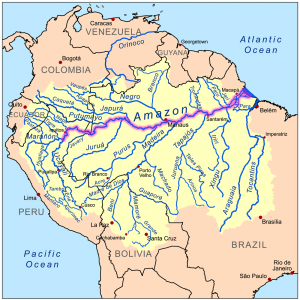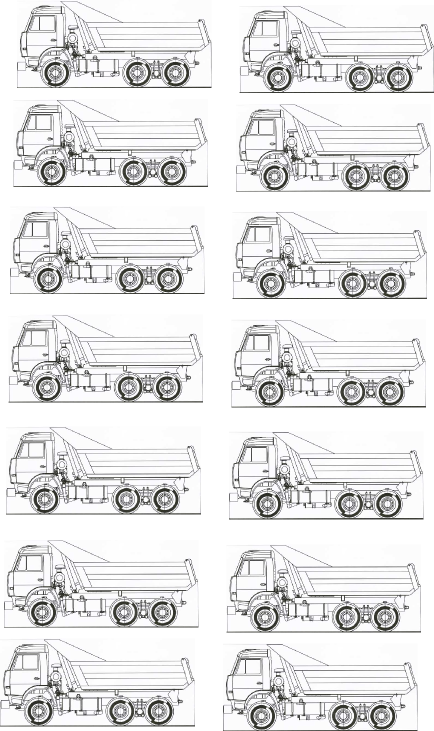Rivers can carry immense amounts of sediments with them. For example the Mississippi river carries a sediment load of around 150 Million tonnes annually.((www.dtic.mil/cgi-bin/GetTRDoc?AD=ADA486343)) That is a big number. Numbers are good, numbers are solid. But often not very easy to understand, or grasp its magnitude. So lets convert it to another unit.
Introducing: TPM (Truck loads per minute)
Truckloads per minute
A truckload is a manageable size in our heads and we can imagine the size and dimensions and how long it would take us to empty it with a shovel. Probably much longer than you’d think. Let’s use a truck like this which can carry approx. 20 tonnes on it’s dump. (please correct me if I’m wrong)

“Triaxle dump truck 2005-10-06.km”. Licensed under Creative Commons Attribution-Share Alike 3.0 via Wikimedia Commons – http://commons.wikimedia.org/wiki/File:Triaxle_dump_truck_2005-10-06.km.jpg#mediaviewer/File:Triaxle_dump_truck_2005-10-06.km.jpg
So one truckload is 20 tonnes. With a year of 365 days, 24 hours per day and 60 minutes in each hour we arrive at the following simple formula.
$latex \frac{150.000.000}{365 \cdot 24 \cdot 60 \cdot 20}=14.3\text{TPM}&s=4$
So every minute the Mississippi dumps 14.3 truckloads into the Golf of Mexico.
Now this is just one river. There are many other major river systems in the world. http://curry.eas.gatech.edu/Courses/6140/ency/Chapter9/Ency_Oceans/River_Inputs.pdf has a comprehensive list of rivers and sediment loads.
The numbers in
If we do the same calculation for all these rivers we end up with staggering numbers (rounded).
[table width=”500px”]
River,TPM
Amazon,114
Yellow,105
Ganges/Bramaputra,101
Yantze,45
Mississippi,14
Irrawaddy,25
Indus,10
Orinoco,20
Copper,12
Madalena,13
[/table]
Why is sediment load important?
If you look at a seismic section or a geological sketch and you often see several kilometers of sediment. It is often hard to imagine how it got there. But once you know the discharge potential of a river system it is much easier to have a feeling of how much sediments over time you are looking at.
If you let the Amazon load 114 truckloads per minute for a million years you end up with an enormous amount. The number is 60.000.000.000.000 truckloads. 60 trillion truckloads
Now the Amazon is considerably older than just one million years. It started around 11 million years ago ((http://www.livescience.com/5542-amazon-river-dated-11-million-years.html)). So since it started it loaded 660 trillion truckloads of sediment out into the basin. (Assuming constant drainage over time)
When does a river start?
A river and it’s basin is defined by topography which is mainly controlled by tectonic events. Continents collide and form mountain ridges like the Alpes, the Himalayas, the Rocky Mountains or in the case for South America the Andes. With the rise of the mountains, erosion and the drainage of water immediately starts to tear them down again. This results in drainage patterns and individual rivers across a basin.

“Amazonrivermap” by Kmusser – Own work using Digital Chart of the World and GTOPO data.. Licensed under Creative Commons Attribution-Share Alike 3.0 via Wikimedia Commons – http://commons.wikimedia.org/wiki/File:Amazonrivermap.png#mediaviewer/File:Amazonrivermap.png
The main part of the Andes got uplifted around 12 million years ago which led to the change of continentwide drainage patterns. One could say: “A river is as old as the mountains at its source”
11 million years sounds old, but really it isn’t. On the geological timescale if falls into the mid Miocene epoch. That is basically “one week ago” for a geologist. Many of the major rivers like the Nile are thought to be several hundreds of millions of years old.
So several hundred million years times many truckloads per minute = a very high number … you get the idea 😉
Always remember magnitude of processes and never underestimate what the factor time can do.



